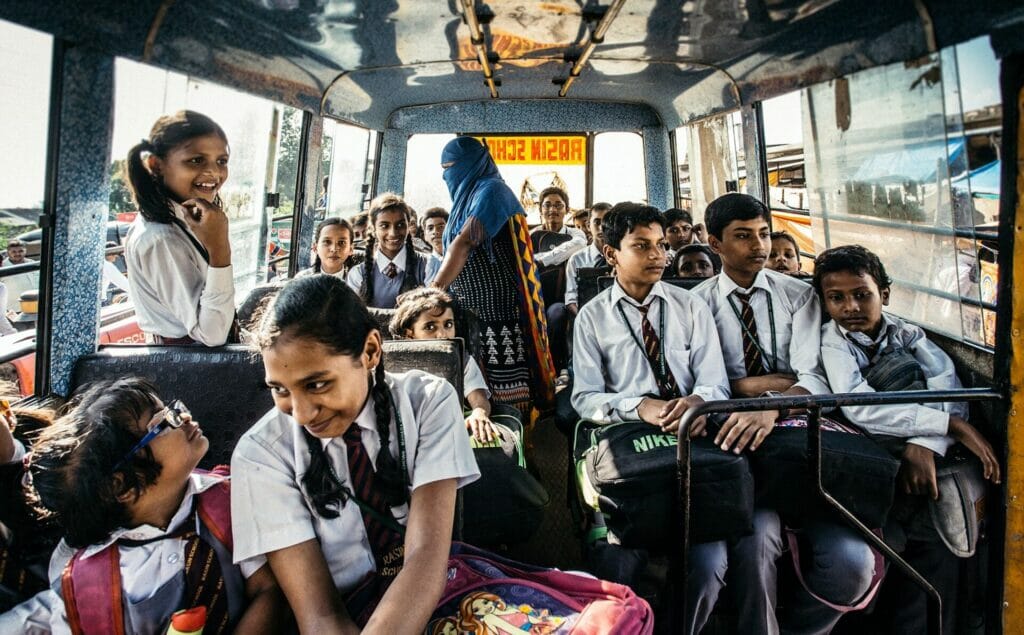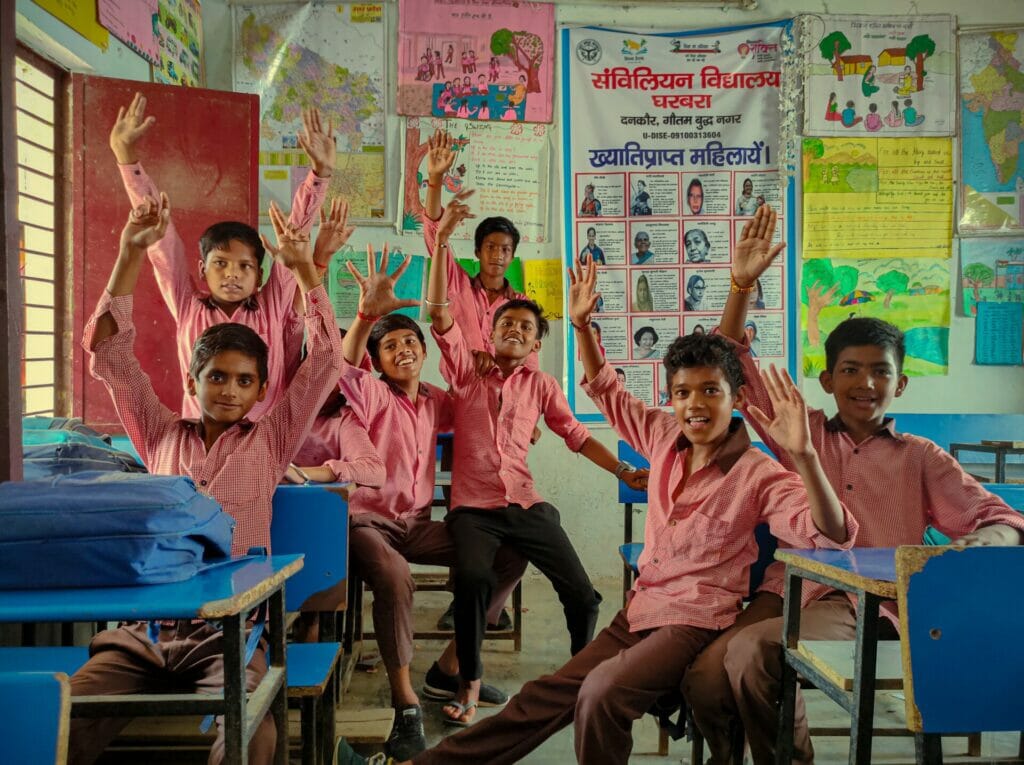In a recent development, the State Education Department issued a directive to all regional deputy directors of education and district education officers. They are tasked with identifying and consolidating small schools within their respective jurisdictions by October 15, aiming to integrate them into larger schools as part of the ‘cluster school’ initiative. If realised, this program will entail approximately 200,000 students commuting considerable distances to access education.
While this initiative has been in the planning stages for several months, its core objective is to improve the quality of education. This would be achieved by exposing students to a larger peer group and providing them with better resources and teachers. However, this move has also faced criticism from many education experts. They view it as a cost-saving measure that may potentially hinder access to primary education for students in remote areas.
Mumbai too will be part of this project in which the BMC schools that have extreme low enrollment will be converted to cluster schools.
According to data provided by the state government, there are a total of 14,783 schools in the state with enrollments of 20 students or fewer. This decision will impact a total of 1,85,467 students and 29,707 teachers.
What are cluster schools?
The Cluster School System, as adopted by many countries, entails the organisation of a group of schools situated in close geographic proximity, typically comprising between five and seven schools. Among these, one school is designated as the cluster center, serving as a central hub accessible to students from the surrounding satellite schools. Ideally, the cluster center should be strategically located with ample facilities and proximity to various social and commercial services. While in other situations, in case schools are not functioning to their full capacity they may get clubbed into a single school.
In practice, cluster centers set good standards for leadership, management, and teaching practices, aiming to establish consistent and standardised educational practices within the geographic vicinity of these schools.
Read more: NEP roll out: Mumbai institutes prepare for the New Education Policy
Why cluster schools in Maharashtra?
Out of approximately 65,000 government-run schools in the state, a significant 14,783 have fewer than 20 students currently enrolled. Within this group, 3,137 schools have enrollments ranging from 6 to 10 students, and 1,734 schools see even lower numbers. These schools are predominantly situated in remote villages and hilly, tribal regions throughout the state. Often, they operate with only one or two teachers responsible for instructing multiple classes within a single classroom.
As per the government’s plan, the newly proposed cluster schools should be strategically located within a 40-minute commuting radius of the smaller schools slated for merging. These cluster schools are expected to feature essential facilities including a library, computer room, science lab, art and culture spaces, and playgrounds. Furthermore, the cluster schools will employ specialised teachers for subjects such as art, computer studies, and physical education.
To facilitate this transition, authorities are mandated to offer free bus transportation for students commuting to and from their new school.

Success stories
The State School Education Department has recently issued a circular providing guidelines for implementing the cluster school policy. This circular references case studies that illustrate the successful application of cluster school projects, with examples drawn from Toranmal in Nandurbar and Panshet in Pune.
“The state’s first ‘cluster school’ project was set up at the Panshet village in Velhe tehsil, where the cluster school caters to students coming from 16 villages. Meanwhile, 26 residential schools in tribal areas of Nandurbar were brought under a single roof at Toranmal Residential School. The school now has a cumulative strength of 700 students. We have the capacity to increase enrollment in this school to 1,500. Similarly, the cluster school helps us reduce establishment costs and, at the same time, upgrade the learning experience,” said an official from the school education department.
The official added, “Many of these schools we have listed have enrollments even fewer than four to five students, leading to inadequate infrastructure, a shortage of qualified teachers, and minimal enthusiasm. We came to the realisation that these students are missing valuable socialisation opportunities.”
Additionally, Clause 7 of the National Education Policy (NEP) 2020 recognises the importance of consolidating small schools into larger ones or cluster schools as a crucial step toward achieving the goal of providing quality education.
Mumbai’s current education scenario
According to a survey by PRAJA foundation, over the past decade, student enrollments in Brihanmumbai Municipal Corporation (BMC) schools have shown a decline. In the academic year 2012-13, there were 4,34,523 students, but by 2018-19, this number had fallen to 3,00,746, marking a substantial 31% drop.
However, the COVID-19 pandemic brought about unique challenges, leading many families to turn to BMC schools as a means to ensure their children’s education. Moreover, several small private schools closed down during the pandemic, resulting in a 6% increase in BMC school enrollments from 2018-19 to 2021-22, reaching 3,18,002 students.
Another concerning statistic pertains to the retention rate in BMC schools, especially from 1st to 10th standard. Only 40% of the students who enrolled in 1st standard in 2012-13 (46,913 students) continued their education up to 10th standard in 2021-22 (18,781 students).
Activists say that even though the state is heading for cluster school system, according to Section 6 of the Right to Education (RTE) Act, the law specifies that a primary school should be set up within a 1-kilometer radius and an upper primary school within a 3-kilometer radius of a defined neighbourhood, as per the Central RTE Rules.
Additionally, despite the cluster school announcement, BMC officials have not yet revealed a specific plan for its implementation.
Government promises facilities through cluster policy
“We can assist with a grant of up to ₹1 crore under the Samagra Shiksha Abhiyan and are requesting the central government for it. Apart from it, the basic need of the cluster schools is the arrangements for the transportation of the students for which we have the provision of spending up to ₹6,000 per student a year,” Ranjit Singh Deol, principal secretary, school education, said.
Stating that the schools with less number of students are struggling for proper education and social connect, Deol said, “Neither students, nor teachers develop interest in studies and other extracurricular activities. The cluster schools, on the other hand, will be equipped with better facilities and infrastructure.”

The policy will increase dropout rates, say activists
The move has been opposed by educational activists and teachers who feel this will lead to unemployment among teachers as well as worsen dropout rates among students, who may not be able to travel if the school is far off for financial as well as safety reasons.
“This is a reprehensible policy of the state government. Who has proved that students in schools with low enrollment do not socialise? Is there any study that suggests this? We would like the school education department to show it to us, as stakeholders, we deserve to know if there is such a study done. This is a violation of RTE, depriving children of education,” said Vijay Kombey, state president of the Maharashtra State Primary Teachers Committee.
“The Right to Education Act requires that the primary and upper primary students be provided school facility within 1 km and 3 km distance of their residence. Maharashtra has been successful in establishing schools in the remotest parts of the state. This progress will be reversed if the cluster school project is implemented. The existing system has been working well,” said Mahendra Ganpule, spokesperson for the Maharashtra School Principals’ Association.
Despite opposition from education experts, the state’s education department remains steadfast in its commitment to the new cluster school system.
The final decision will be taken following the submission of the consolidated list of small schools within their respective jurisdictions by education officers before October 15th.
(Are you an educator or an urban planner? What is your opinion about the cluster school policy? You can write to us in the comments or at mumbai@citizenmatters.in.)